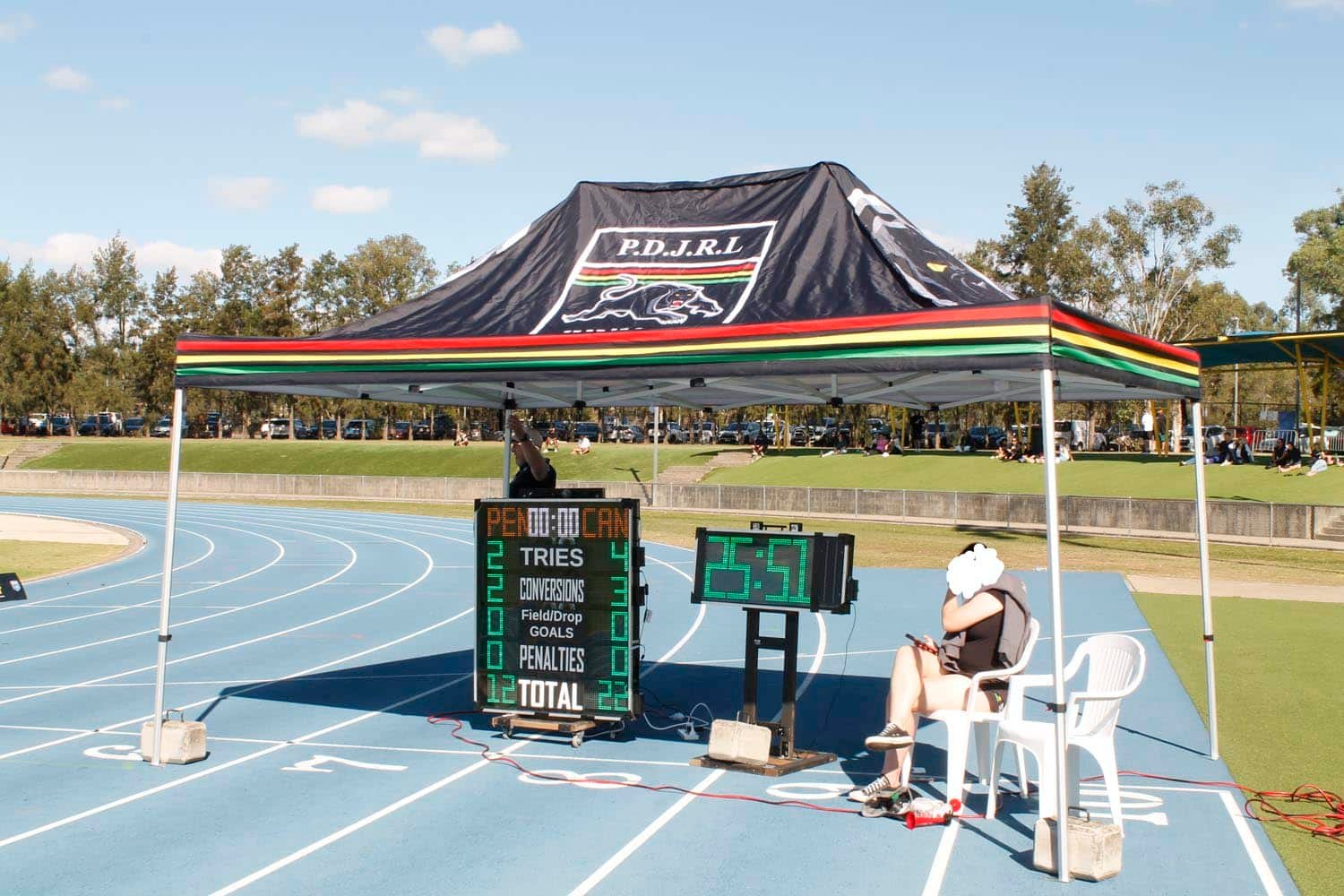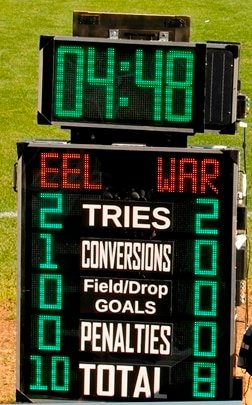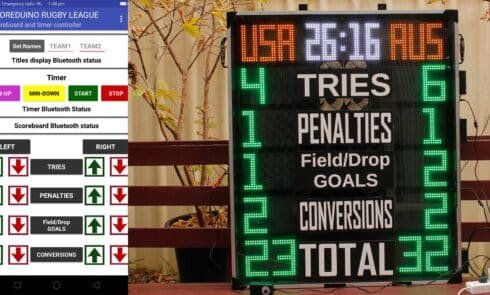We rent digital scoreboards for soccer, AFL, hockey, polo, netball, rugby league, tennis, and cricket
Contact us now– send email directly to scoreduino.com@gmail.com or send text message: 045 1746 024
HIRED BY PENRITH PANTHERS
When you hire the scoreboard, the score elements are in this sequence. WHY ?
🏉 Rugby League Scoreboard Sequence
-
Tries (T)
-
Conversions (C)
-
Penalties (P)
-
Field Goals (F or FG)
-
Total (TOTAL)
Rugby is a beloved sport in Australia, comprising two major codes: Rugby Union and Rugby League. While they share a common origin, the two sports have distinct rules, cultures, and followings. This article will explore how both codes are played in Australia, their popularity, key rules, and the significant wins and losses for Australian teams. Additionally, we’ll highlight the differences and similarities between the two codes, how points are calculated, and the elements of a digital rugby scoreboard.
Popularity of Rugby in Australia
Rugby Union
Rugby Union has a strong following, particularly in the eastern states, including New South Wales and Queensland. It’s also popular in regions like the Australian Capital Territory and Western Australia. The sport is governed by Rugby Australia and features competitions like Super Rugby and the National Rugby Championship (NRC). The Wallabies, Australia’s national team, are a significant part of the country’s sporting identity, frequently competing in international tournaments like the Rugby World Cup.
Rugby League
Rugby League is particularly popular in New South Wales and Queensland, with a robust fanbase concentrated in cities like Sydney and Brisbane. The National Rugby League (NRL) is the premier competition, drawing significant crowds and television audiences. The State of Origin series, where New South Wales and Queensland face off, is one of the most fiercely contested rivalries in Australian sport, attracting widespread attention.
Key Rules of Rugby Union and Rugby League
Rugby Union
- Players: 15 players per team.
- Game Duration: 80 minutes (two halves of 40 minutes).
- Scoring:
- Try: 5 points
- Conversion: 2 points
- Penalty Kick: 3 points
- Drop Goal: 3 points
- Tackling: Players must tackle below the line of the shoulders. After a tackle, a ruck forms, and players compete for possession.
- Set Pieces: Scrums and lineouts are key components of play.
Rugby League
- Players: 13 players per team.
- Game Duration: 80 minutes (two halves of 40 minutes).
- Scoring:
- Try: 4 points
- Conversion: 2 points
- Penalty Goal: 2 points
- Field Goal: 1 point
- Tackling: Players can be tackled above or below the waist, but only six tackles are allowed before possession changes.
- Set Pieces: There are no lineouts; the game restarts with a scrum after a knock-on or forward pass.
Biggest Win and Loss of Australia
Rugby Union
- Biggest Win: Australia recorded a massive victory against Namibia, winning 142-0 in the 2003 Rugby World Cup.
- Biggest Loss: The Wallabies faced a heavy defeat against England in 2023, losing 40-16 in the Rugby World Cup quarter-finals.
Rugby League
- Biggest Win: The Kangaroos achieved a remarkable 74-0 victory over the USA in 2013.
- Biggest Loss: Australia suffered a 38-6 loss to Great Britain in the 2004 Rugby League World Cup.
Differences and Similarities Between Rugby Union and Rugby League
Differences
- Number of Players: Union has 15 players, while League has 13.
- Game Structure: Union features more set pieces like scrums and lineouts, while League is more continuous and focuses on possession changes after six tackles.
- Scoring System: The points awarded for tries, conversions, and goals differ between the two codes.
Similarities
- Field: Both are played on a rectangular field with goalposts.
- Objective: The aim in both codes is to score more points than the opposing team.
- Contact Sport: Both involve tackling, passing, and strategic play.
Points Calculation
In Rugby Union, points are calculated as follows:
- Try: 5 points
- Conversion: 2 points
- Penalty: 3 points
- Drop Goal: 3 points
In Rugby League:
- Try: 4 points
- Conversion: 2 points
- Penalty: 2 points
- Field Goal: 1 point
Elements of a Digital Rugby Scoreboard
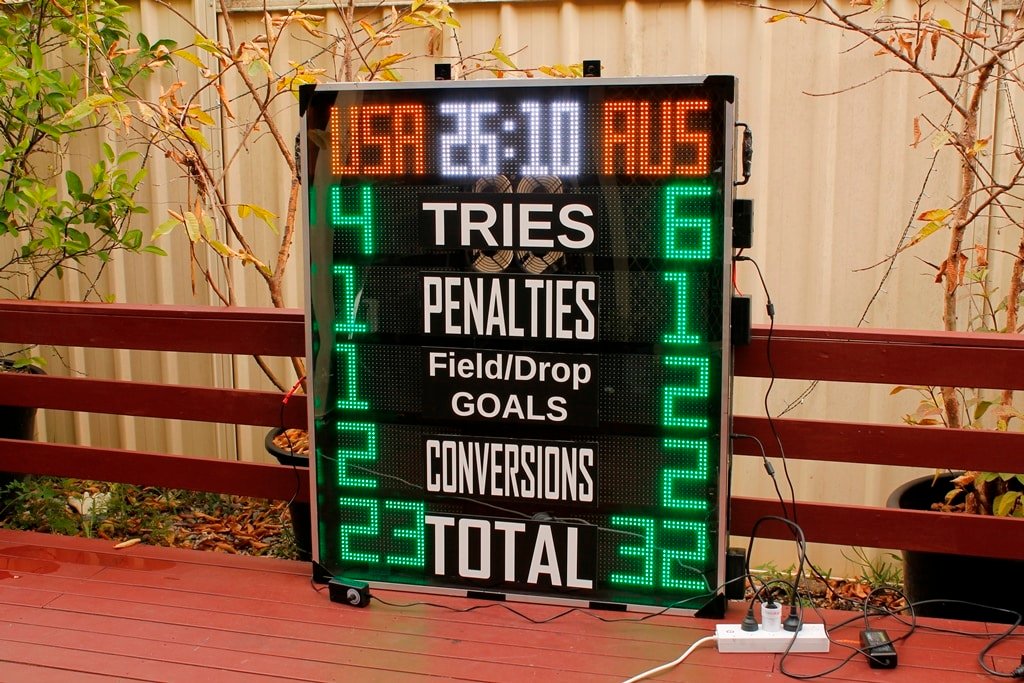
A digital rugby scoreboard typically includes the following elements:
- Team Names: Displays the names of the competing teams.
- Scores: Shows the current score for each team.
- Time Remaining: Counts down the time left in each half.
- Points Breakdown: Lists the types of scores (tries, conversions, penalties) and their respective points.
- Player Information: May display key player stats, like try-scorers or penalties.
- Fouls/Yellow Cards: Indicates any fouls or disciplinary actions taken against players.
- Match Status: Shows if the game is live, paused, or completed.
Conclusion
Rugby Union and Rugby League are integral to Australia’s sporting culture, each boasting its unique characteristics and passionate fanbases. Understanding their rules, scoring, and key differences enhances the appreciation of both codes. Whether cheering for the Wallabies or the Kangaroos, Australians continue to celebrate the excitement and camaraderie that rugby brings to the nation.
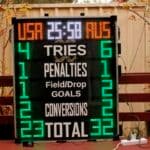 Hire Rugby League Scoreboard in Sydney.
Hire Rugby League Scoreboard in Sydney. 

